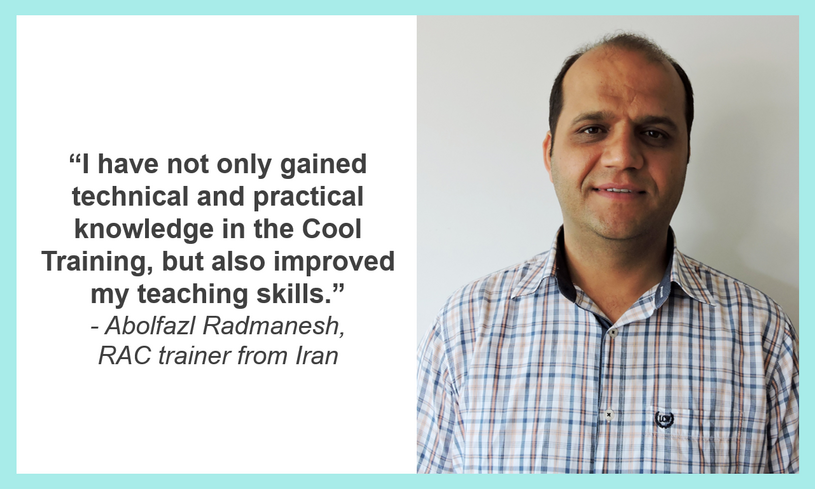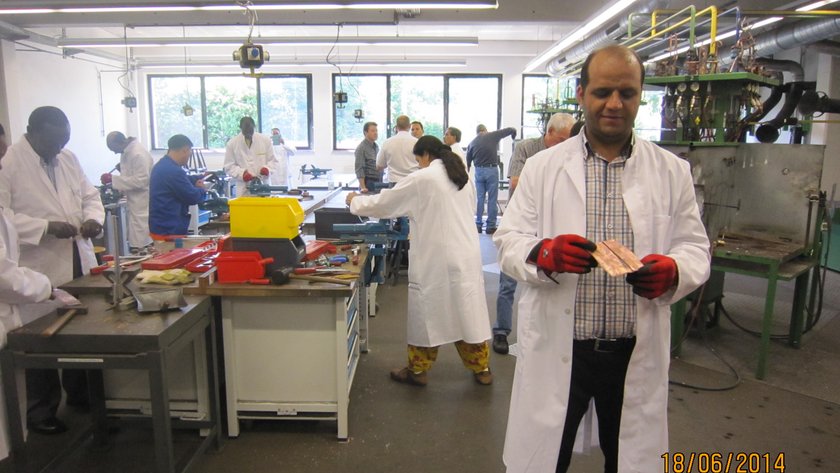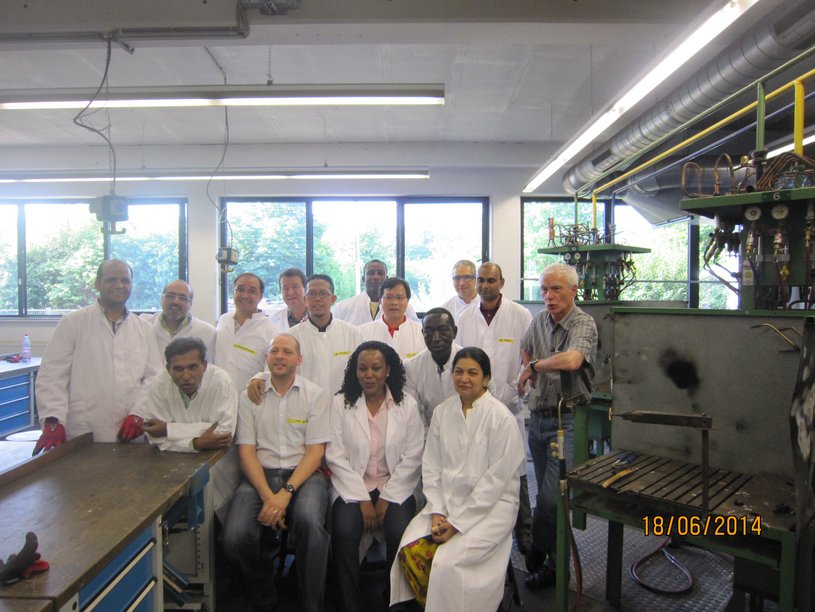Between welding copper pipes and watching the World Cup with new friends: Abolfazl Radmanesh, RAC trainer from Iran, talks about his participation in the first Cool Training in 2014.
When Proklima organised its first Cool Training (opens in a new window) on the safe use of natural refrigerants in 2014, Abolfazl Radmanesh was one of 14 participants. He is RAC professional and trainer at one of the renowned vocational training institute in Iran and has been working as a consultant for RAC system designing for 15 years. We asked him about his Cool Training experience back then, lessons learned and his motivation to promote Green Cooling in Iran.
Mr. Radmanesh, what were the most important insights you gained during the first Cool training?
Looking back on the Cool Training in Germany, I learned a lot about the compliance with environmentally-friendly requirements in refrigeration and air-conditioning technologies. I was particularly impressed by the high level of precision with which the trainers conveyed technical and practical knowledge. Nevertheless, I not only gained insights through the training material, but also learned how to teach prospective students professionally and how to design courses at vocational training centres, such as with the active participation of related industries.
Which aspect that you learned during the Cool Training could you apply in the RAC sector in your country?
In fact, I could use almost all theoretical topics of the Cool Training during my courses at the vocational training center or in trainings elsewhere. Some aspects could not be covered due to the lack of R-744 and R-290 at the training site.
Slideshow showing Abolfazl Radmanesh during the Cool Training in 2014
How have you been able to pass on knowledge about the safe use of natural refrigerants?
Since 2014, I have been holding short term training courses on natural refrigerants for professionals of the RAC sector and for technicians throughout the country. Furthermore, I work as a consultant for RAC and related industries and engage in a continuous cooperation with the National Ozon Unit at the Iranian Ministry of Environment to promote the dissemination of Green Cooling.
Are you still in contact with the other Cool Training participants? Have you exchanged experiences and knowledge?
Since 2014 I have had a close contact and continuous cooperation with Mr. Alireza Saadatfar, participant of the Cool Training in Germany and Proklima project coordinator Iran. We had a great exchange and co-thinking for the transfer of knowledge and skills related to natural refrigerants during the last years.
In 2019, the publication “Safe use of HC refrigerant – A handbook” was translated into Farsi in coordination with GIZ and Mr. Saadatfar as well as with my input for the technical parts in order to support the Iranian RAC sector in the implementation of natural refrigerants. In addition, I try to initiate active information exchange in the RAC sector on natural refrigerants via social media.
Pictures showing all participants during the Cool Training
Looking back on the Cool Training and your stay in Germany, what is your best memory?
There is a myriad of good memories from my trip. Just to name a few: watching the World Cup football matches with our international friends between breaks, attending meetings and gatherings with GIZ as well as with the directors of the training centres, and the practical exercises such as welding copper pipes.
It is clear from what you have said so far that you are very committed to Green Cooling technologies. Why is that?
Technology is momentous for people and the environment. One can say that all together - technology, the environment and humans - are the three constitutive points of the ‘triangle of life’. This logic is based on two rationales, which motivate me to promote Green Cooling: my personal responsibility as a human being and the great role of sustainable cooling technology in protecting the environment.



